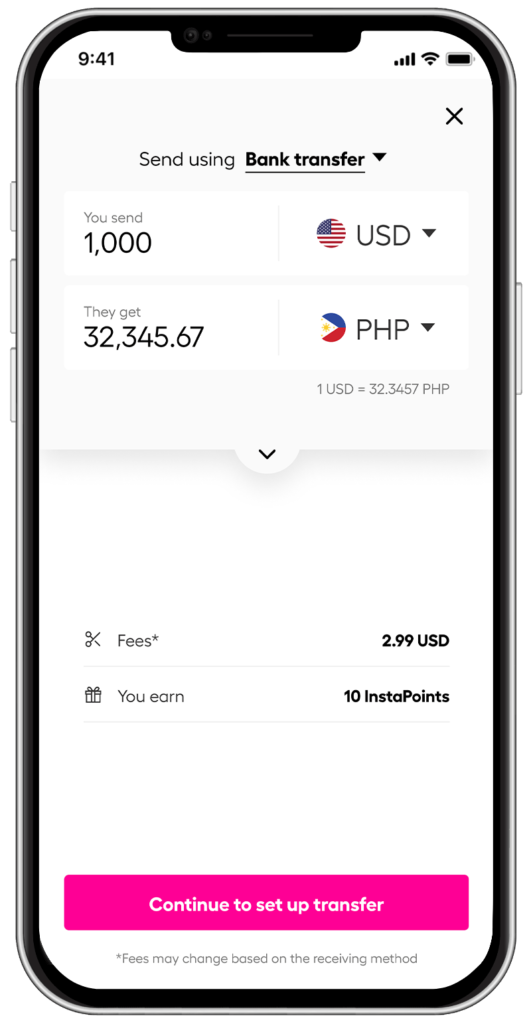Canada’s student cap: Top global alternatives for international students

This article covers:
- Overview – Top 3 global alternatives for international students apart from Canada
- Understanding the reason for Canada cap on foreign students
- Which courses do international students opt for in Canada?
- Top global study options for international students apart from Canada
- United Kingdom
- Germany
- Factors to keep in mind when choosing alternative countries for higher education
- Beyond Canada: Ideal study locations – Final words
- Frequently asked questions
“Canada announces 2-year cap on international student visas” – This news has shattered the international students who were looking forward to studying in Canada this year. If you are among them, read this blog to find out about the top global study options for international students other than Canada.
Canada has been recognized as one of the best global destinations for study. Over the years, the country has seen a huge influx of international students seeking high-quality education at its prestigious institutions. Earlier this year, Canada’s international student program had no restrictions, allowing any foreign national with a clean background, letter of invitation, and proof of funds to enter and study in Canada.
However, things are not the same anymore. Marc Miller, Canada’s Immigration Minister, has announced a cap on new study visas to reduce the number of international students by a whopping 35%. Note that changes have also been made in the PGWP (Post-graduation Work Permit) programmes. The international students who have enrolled on a curriculum licensing programme will no longer be eligible for a post-graduation work permit. It is done to encourage foreign students to return to their home countries after finishing their studies.
Nevertheless, the graduates of master’s and other professional programmes and their spouses will remain unaffected by this decision. They will “soon” be able to get a three-year work permit.
In this blog, we will discuss the reason behind this cap, along with enlisting the top global alternatives for international students.
Overview – Top 3 global alternatives for international students apart from Canada
- USA – As per the recent findings of QS World University Rankings 2023, the US is home to five out of the top ten universities in the entire world. It is by far the best alternative to Canada for international students.
- UK– The United Kingdom ranks in the 2nd position in the list of top countries for education in the world. This thriving economy is home to some of the most prestigious institutions, including Oxford and Cambridge.
- Germany – With plenty of public universities offering quality education at zero tuition fees, Germany is the ultimate destination for international students with a limited budget.
Understanding the reason for Canada cap on foreign students
Housing shortage: One of the major reasons that forced the Canadian government to introduce an international student cap is the rising shortage of housing in the country. Due to a higher surge in the number of international students over the year, the country is experiencing an acute shortage of residential properties, resulting in sky-high rents.
Decreasing quality of education: The downside of Canada’s International Student Program is that some private institutions have taken unfair advantage of international students by running fake degree programs, charging huge tuition fees, and leaving students without any support or assistance. This is another reason behind the 2-year cap announcement for study visas in Canada.
Which courses do international students opt for in Canada?
- MBA
- Computer Science and IT
- Core Engineering and Engineering Management
- Business & Finance
- Biosciences, Medicine and Healthcare
- Agriculture Science and Forestry
- Earth Sciences & Renewal Energy
- Media and Journalism
- Human Resources and Psychology
- Mathematics, Statistics, Actuarial Science and Analytics
Top global study options for international students apart from Canada
United States
The United States is hands down one of the best Canada student cap alternatives for international students.
With a foreign student population of over 1,000,000, the US is a dream destination for those aiming to build a thriving career. The country not only offers a high-quality education but also provides ample lucrative opportunities after course completion.
This is perhaps the biggest reason why people from every nook and corner of the world choose to study in the US as a path to a successful career.
Top Courses + Universities
Stream | Top Courses/Specialization | Top Universities | ##Fee Range |
MBA | MBA in marketing, finance, IT, healthcare management, consulting, HR, operations management, global management, etc. |
Massachusetts Institute of Technology
| $82,000 to $88,000 per year. |
Engineering/MS | Computer science engineering, aviation engineering, mechanical engineering, electrical engineering, robotics, data science, artificial intelligence, etc. |
Massachusetts Institute of Technology, Cambridge
| $40,000 to $70,000 per year. |
Medical | Research, primary care, surgery, psychiatry, radiology, obstetrics and gynaecology, etc. |
| $70,000 upwards per year. |
Application process
- Step 1: Choose your program.
- Step 2: Shortlist the universities.
- Step 3: Learn about the admission process and requirements.
- Step 4: Take the required entrance and/or language proficiency test (IELTS, TOEFL, etc.).
- Step 5: Draft LORs and SOPs.
- Step 6: Fill the application form.
- Step 7: Get an invitation or acceptance letter.
- Step 8: Pay the fee.
- Step 9: Receive form I-20.
- Step 10: Apply for F-1 (student) visa
How to get a student (F-1) visa?
- Step 1: Receive the acceptance letter from a SEVIS-registered university and complete form I-20.
- Step 2: The next step is to pay the SEVIS (Student & Exchange Visitor Information) fees. You can easily make the payment online.
- Step 3: Fill out Form DS-160, pay the visa application charges, and schedule an appointment at the US Embassy or registered Visa Application Center near your area.
- Step 4: Attend the visa interview and submit all the required documents. You can check the visa requirements online on the official website of the US Embassy in your country.
- Step 5: Once the application is submitted, it can take three to four weeks to get approved or denied.
Work opportunities during and after studies
- During course: International students can find plenty of work opportunities during and post their studies. During their semesters, students can take up part-time work in restaurants, retail stores, tutoring centres, etc. They can even take up on-campus jobs at their universities.
There are certain rules and regulations for international students regarding work. Students are only allowed to work for a maximum of 20 hours per week during their course. However, students can work as full-time employees during their semester breaks. - After the course: There are plenty of work opportunities post studies. While most students start applying for jobs and convert their study visas into H1-B visas, others opt out for training and paid internships to get enough practical experience before getting into a full-time job.
Expected salary range
Following is the national average annual salary as per the education level:
- Bachelor’s degree: $59,913
- Master’s degree: $70,941
- Professional degree: $102,265
Source: Forbes Advisor
Also read: Guide on average salary in the US in 2024.
United Kingdom
The United Kingdom is another great alternative to Canada for international students. Higher education in this country has an incredible reputation. A degree from a prestigious UK-based university is widely accepted by all government and private organizations across the world.
Besides having some of the best global universities for students like Oxford, Cambridge, etc., the UK also offers an easy Graduate Immigration Route to help you find a suitable opportunity to work and live in the country for another two years.
Top Courses + Universities
Stream | Top Courses/Specialization | Top Universities | ##Fee Range |
Business and Management | MBA in accounting and finance, marketing and strategy, HR, healthcare management, economics, business law, entrepreneurship, etc. |
| £17,000GBP to £80,000 GBP |
Engineering/MS | Civil engineering, mechanical engineering, computer science engineering, automotive engineering, electrical engineering, etc. |
| £15,000 GBP to £30,000 GBP per year. |
Medical | Research, cardiology, orthopaedic surgery, dermatology, radiology, obstetrics and gynaecology, psychiatry, etc.
|
| £38,000 GBP upwards |
Application process
- Step 1: Decide on a course and shortlist at least 4-5 universities.
- Step 2: Register and apply online on UCAS (Universities and College Admission Service) for undergraduate courses. For post-graduation courses, there are specific requirements that you can find and apply on the official website of the university.
- Step 3: Receive the letter of acceptance.
- Step 4: Arrange sufficient funds to support your education and stay in the country. You can also check the available scholarships to manage your tuition fees.
- Step 5: Apply for a UK student visa.
How to get a student visa?
- Step 1: Get the CAS (Confirmation of Acceptance for Studies).
- Step 2: Learn about the financial and other requirements.
- Step 3: Apply online on the official website of the UK government and submit all the documents.
- Step 4: Submit biometrics at a Visa Application Centre and pay the visa application fee.
- Step 5: Wait for the visa decision.
Work opportunities during and after studies
- During course: International students in the United Kingdom can opt for part-time work during their studies and full-time during their breaks and vacation.
- After course: After completing their studies, international students can opt for the Graduate Route to seek full-time employment for two years.
Expected salary range
Below is the average median salary in the UK as per the educational level:
- Bachelor’s degree: £34,000
- Master’s degree: £42,000
Source: Invezz
Also Read: Guide on average salary in the UK in 2024.
Germany
Germany is another one of the top global alternatives for international students. Named among the most powerful economies in the world, Germany has a world-class education system that ranks at the top. The best part about studying in Germany is that you don’t need a lot of money. There are plenty of public universities in the country that offer excellent study programs at a nominal or zero tuition fee. On top of that, you can also apply for certain scholarships after meeting a few requirements.
Another reason why Germany is among the top international education choices outside Canada is the 18-month postgraduate work visa it offers. It means you have a year and a half to look for a suitable job and get full-fledged employment with a work permit.
Top Courses + Universities
Stream | Top Courses/Specialization | Top Universities | ##Fee Range |
MBA | General management, marketing, finance, entrepreneurship, human resources, international business, etc. | Technical University of Munich
Frankfurt School of Finance and Management
| Public Universities: 0 Tuition fee Private Universities: €15,000 to €20,000 per year. |
Engineering | Automotive engineering, aviation and aeronautical engineering, environmental engineering, civil engineering, mechanical engineering | Technical University of Munich
| €100 to €1,500 per semester |
Medical | Internal medicine, surgery, gynaecology and obstetrics, ophthalmology, neurology, paediatrics, radiology, etc. | Ludwig Maximilian University of Munich
| Public universities: no tuition fee Private universities: €5,000 to €15,000 per semester. |
Application process
- Step 1: Choose a course and shortlist a few universities on DAAD.
- Step 2: Check the admission criteria and eligibility for admission. Most universities require a Letter of Recommendation, Letter of Motivation, and proof of English or German proficiency, along with educational certificates for postgraduate programs.
- Step 3: Arrange sufficient funds.
- Step 4: Apply online on Uni-assist or the official website of the university.
- Step 5: Receive the Letter of Invitation and apply for a visa.
How to get a student visa?
- Step 1: Get the Letter of Invitation.
- Step 2: Locate a German diplomatic mission (embassy or consulate) near your location and schedule a visa appointment.
- Step 3: Visit the German Embassy/consulate or Visa Application Centre to file a visa application.
- Step 4: Submit the necessary documents along with the duly filled application form.
- Step 5: Wait for the decision.
Work opportunities during and after studies
- During the course: International students can take up part-time jobs up to 20 hours per week during their course and full-time during their breaks in Germany.
- After the course: After completing the course, students can obtain an 18-month job seeker visa to search for suitable opportunities or apply for internships to gain some work experience before applying for a job.
Expected salary range
- Bachelor’s degree: €54,210
- Master’s degree: €61,906
- University diploma: €78,687
Source: Germansuperfast.com
Factors to keep in mind when choosing alternative countries for higher education
- Reputation of the university: Before applying for the desired course, make sure that the university is renowned. Do enough research on the academic position, faculty, and reputation of the university for your chosen course.
- Tuition fee: Tuition fees are another important factor when considering admission into a foreign university. Check the fee structure carefully and look out for available scholarships and grants.
- Cost of living: Apart from tuition fees, it is very important to consider the overall cost of living, especially if you are planning to take education loans. This amount can add up significantly to your overall budget. When calculating the cost of living, take into account factors like the cost of accommodation, food, medical, transportation, etc.
- Work opportunities: Keep an eye out for part-time work opportunities to support your stay in a foreign country. Start by looking for on-campus jobs as they pay higher, and you gain some quality work experience as well. If your university does not offer on-campus jobs, you can explore other options in your city of study.
- Visa requirements: Finally, be very careful when looking at the visa requirements for specific countries. It is critical to understand and adhere to the requirements to avoid unnecessary delays and rejections of your study visa.
Beyond Canada: Ideal study locations – Final words
No doubt, Canada is an excellent country to study and work in. However, there are many study abroad alternatives to Canada like the US, UK, and Germany that not only offer a quality education but also offer great work opportunities post studies. So, stop stressing about Canada’s international student cap and try exploring institutions in other countries.
We understand that being an international student comes with its challenges and managing finances remains on the top. During your studies, you might need to transfer funds across borders to pay for your tuition fee, accommodations, medical expenses, and so on. At this point, you must utilize a trusted money transfer service like Instarem to avoid higher exchange rates and potential scams.
Instarem is one of the most secure, fast, and reliable fund transfer services that is known for offering bank-beating exchange rates and a secure transaction channel. It offers a fast** and affordable# solution with an excellent transfer amount guarantee for international students to transfer funds to and from their home country.

Rates are for display purposes only.
Try Instarem for your next transfer.
Download the app or sign up here.
Frequently asked questions
- What is the cap in Canada for international students?
The cap in Canada for international students refers to a maximum limit on the number of foreign students in the country. It is introduced to reduce the number of international students by 35% to overcome challenges like housing shortages, increasing rents, and low-quality education. - Can I apply to multiple countries simultaneously?
Yes. It is possible to apply to different countries at the same time. However, it is a very complicated approach as each country has a different application process, visa requirements, immigration formalities, and so on. Hence, it is recommended to follow a targeted approach and apply for a single country to increase your chances of faster visa approval. - What are the language proficiency requirements for different countries?
Language proficiency requirements vary from one country to another. However, a majority of countries require a higher level of English proficiency since English is a widely spoken language in most countries. Tests like IELTS and TOEFL are required in the UK, USA, Canada, Australia, etc.
Nevertheless, some countries have specific language requirements, such as Germany, which requires a DSH as proof of German proficiency. - How does the post-study work visa vary across countries?
Post-study work visa policies are different in different countries. For instance, Canada offers a Post Graduate Work Permit, whereas the UK offers a Graduate Route. Coming to Germany offers a job search visa that comes with a validity of 18 months and allows the visa holder to find a suitable job after the completion of their studies. - Are there any specific scholarships for international students?
Yes. There are several scholarships available for international students in different countries. Germany offers a DAAD scholarship, whereas the US has a Hubert H. Humphrey Fellowship program, and the UK offers Chevening Scholarship programs. Moreover, there are many university-specific scholarships available for international students, which you can check out on the official websites of the institutions. - What cultural challenges might I face in different study destinations?
Different education systems, language proficiency, way of living, eating habits, diversity, etc., are some of the cultural differences most international students face in different countries.
Disclaimer:
- This article is intended for informational purposes only. All details are accurate at the time of publishing. Instarem has no affiliation or relationship with products or vendors mentioned.
- **Fast meaning 75% of our transactions are completed in 15 minutes. Depending on the funding method
- #When it comes to affordable exchange rates and fees, it’s worth noting that the cost will vary depending on how you choose to fund your transactions. Credit card funding and bank transfer fees can differ significantly.
● ##The course fees mentioned in the blog are subject to change. It is advisable to confirm with a trusted authority before proceeding further.
Instarem stands at the forefront of international money transfer services, facilitating fast and secure transactions for both individuals and businesses. Our platform offers competitive exchange rates for popular currency pairs like USD to INR, SGD to INR, and AUD to INR. If you're looking to send money to India or transfer funds to any of 60+ global destinations, Instarem makes it easy for you. We are dedicated to simplifying cross-border payments, providing cutting-edge technology that support individuals and businesses alike in overcoming traditional fiscal barriers normally associated with banks. As a trusted and regulated brand under the umbrella of the Fintech Unicorn Nium Pte. Ltd., and its international subsidiaries, Instarem is your go-to for reliable global financial exchanges. Learn more about Instarem.

























